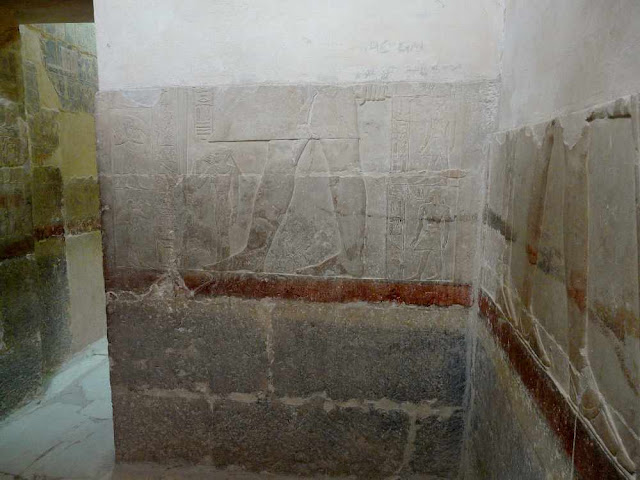Mereruka, in large size, . Standing in front of him, at a much small scale, is his wife with a lotus blossom to her nose.
[Note: The term "lotus" which we use, for reasons of tradition and convenience,is botanically incorrect. It represents a water lily, and more precisely here its blue variety, Nymphaea caerulea.In front of them, each in a single register, are the lower two of several mortuary priests bringing offerings from his estates. Behind them, again each in a single register, are : his eldest beloved son Memi at the bottom and with Mereruka's brother Ihy above him. It would have been interesting to know who stood above these two

Comments
Post a Comment